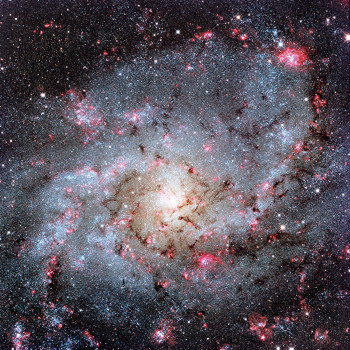 Our Milky Way galaxy
Our Milky Way galaxy
John Lauder
The Milky Way is the galaxy that contains our Solar System. Its name “milky” is derived from its appearance as a dim, glowing band (easily seen on dark nights from SaddleBrooke) arching across the night sky whose individual stars cannot be distinguished by the naked eye. From Earth, the Milky Way appears as a band because its disk-shaped structure is viewed from within. Galileo Galilei first resolved the band of light into individual stars with his telescope in 1610. Until the early 1920s, most astronomers thought that the Milky Way contained all the stars in the Universe. Following the 1920 Great Debate between the astronomers Harlow Shapley and Heber Curtis, observations by Edwin Hubble showed that the Milky Way is just one of many galaxies—-now estimated to number as many as 200 billion galaxies in the observable universe.
The Milky Way is a barred spiral galaxy that has a diameter around 150,000 light-years. The Milky Way is estimated to contain 1.5 to 2 trillion stars. There are probably at least 100 billion planets in the Milky Way. Our Solar System is located within the disk, about 27,200 light-years from the Galactic Center, on the inner edge of one of the spiral-shaped concentrations of gas and dust called the Orion Arm. The stars in the inner 10,000 light-year circle form a bulge and a football shaped bar radiates from the bulge. The very center is marked by an intense radio source, named Sagittarius A*, which is likely to be a supermassive black hole.
Stars, planets and gases at a wide range of distances from the Galactic Center orbit the center at approximately 136 miles per second. This constant rotation speed contradicts the laws of Keplerian dynamics and suggests that much of the mass of the Milky Way does not emit or absorb electromagnetic radiation. (Translation: the Milky Way should weigh more but we can’t find it.) This unknown mass has been given the name “dark matter.” The sun rotates around the gravitational center of the galaxy every 240 million years. The stars in the Milky Way do not rotate around the center of the galaxy like our planets revolve around the sun. Many stars are above or below the primary galaxy plane (think Pluto). Thus over time, the stars, our constellations, will change in shape. (For example, the North Star will not be at our North Pole!) The Milky Way as a whole is also moving at a velocity of approximately 372 miles per second. The oldest stars in the Milky Way are nearly as old as the Universe itself and thus must have formed shortly after the Big Bang.
The Milky Way has several satellite galaxies and is part of the Local Group of galaxies, which is a component of the Virgo Supercluster of galaxies. Makes you feel kind of small, doesn’t it?
The next SkyGazers meeting will at the MountainView Clubhouse on February 14 in the Sonoran Room. SkyGazer sky parties (telescopes at the softball field) will be held today, February 10 and March 8 at dusk.
